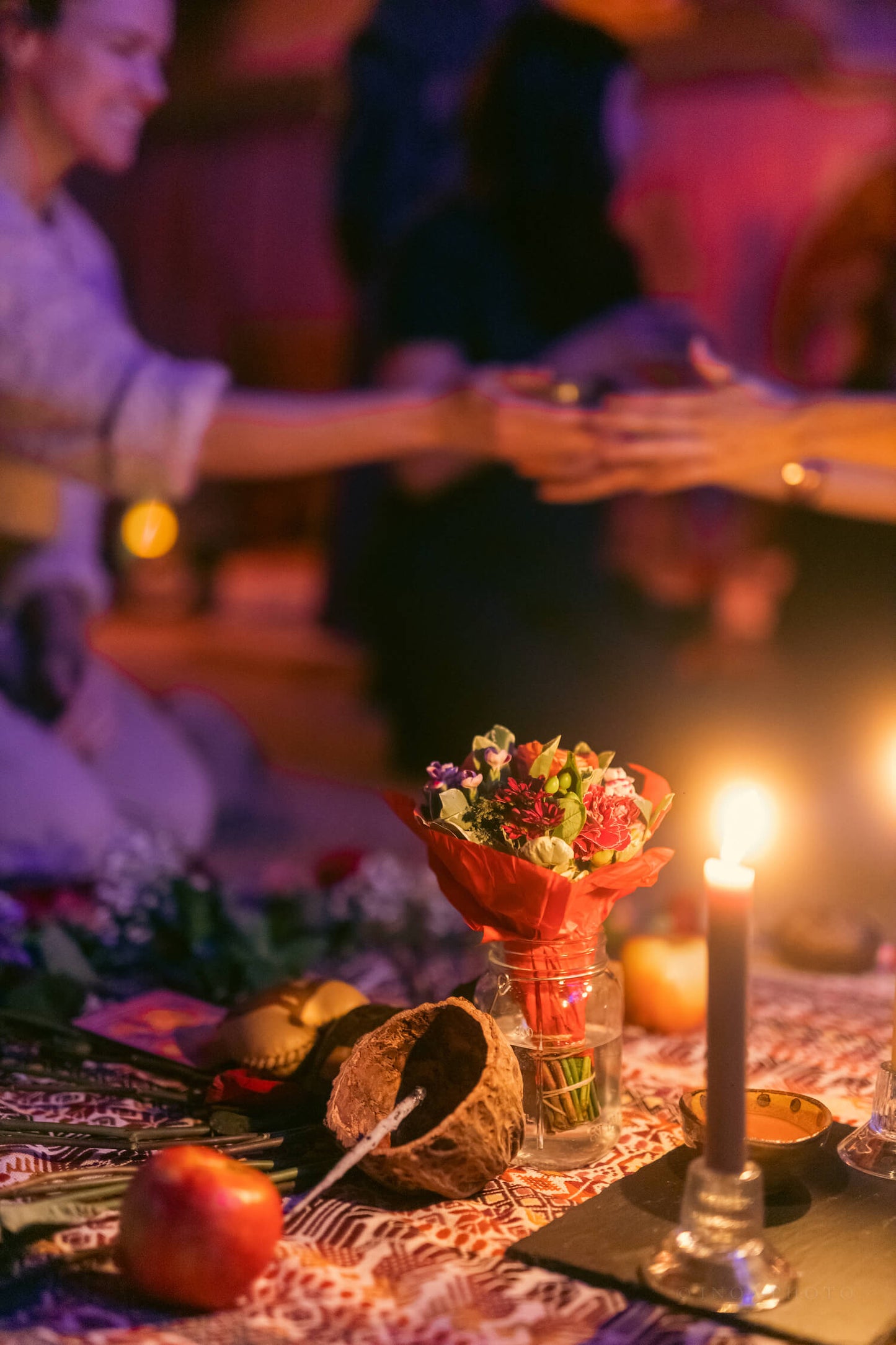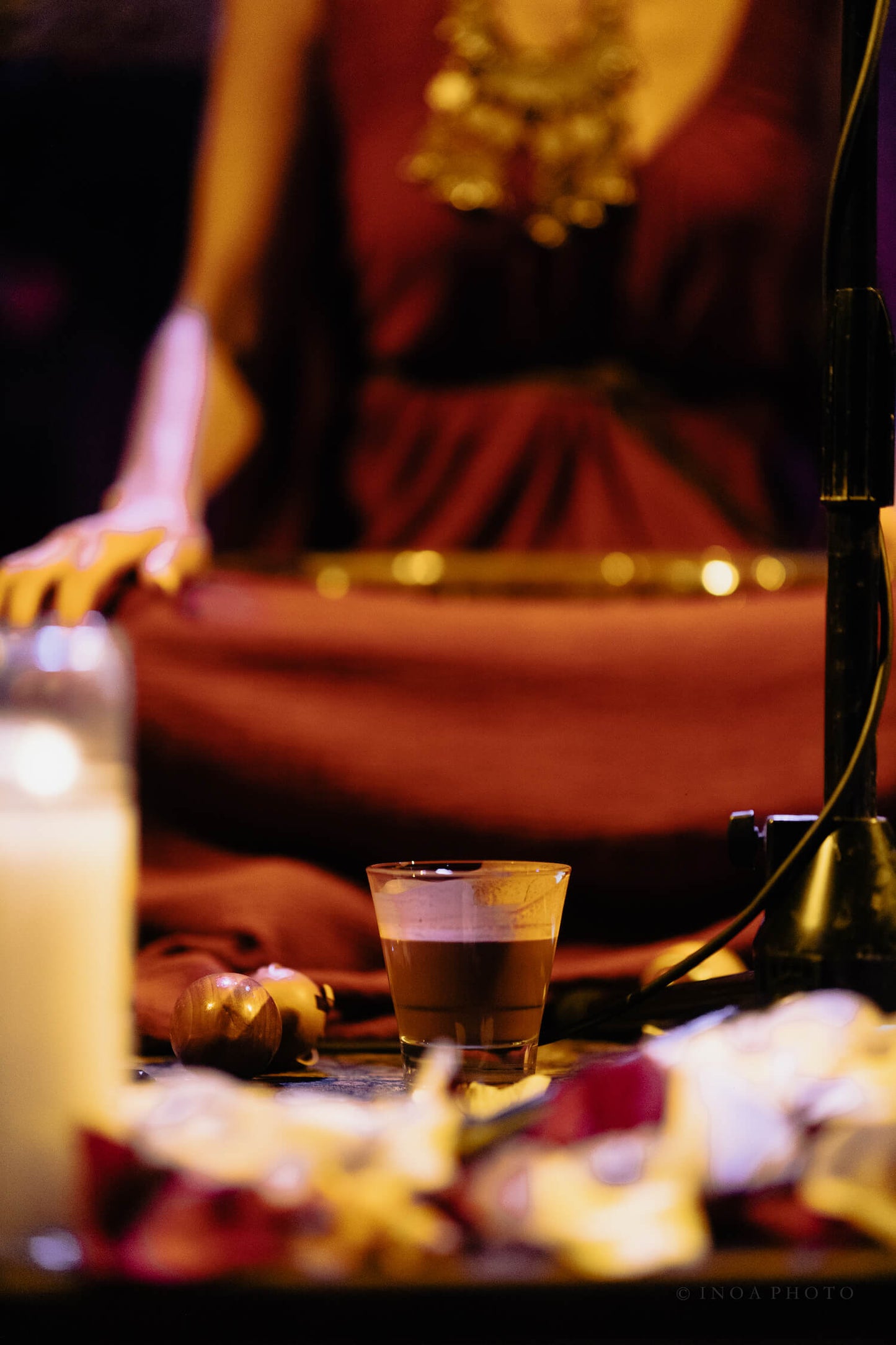What Is a Cacao Ceremony?
Cacao ceremonies have been reintroduced in our modern society as a way to connect deeper with ourselves and our environment. It is an opportunity to take a moment to pause, reflect, celebrate, contemplate, and bring light to the moments we often take for granted. Before chocolate was brought to Europe and the rest of the world, many ancient traditions, especially in Central America, would use the pure form of chocolate (cacao) in rituals and ceremonies. Today, we see this practice coming back to our society. Just as music reflects the changing sensibilities of different time periods and cultures, we see cacao ceremonies today reflecting our need to invite in more connection, purpose, celebration, and gratitude into our modern lives.
These modern cacao ceremonies are not religious but have a deep connection to spirituality, although one does not need to label themselves as spiritual in order to partake in the experience. It is at its essence a way to return to the simplicity of life, honoring what’s important to the individual and the collective. And while the form and function of modern cacao ceremonies are very different from the traditional rites of Indigenous traditions, the core tenets remain: gratitude, intention, and reciprocity (more on these later).
Why Attend a Cacao Ceremony?
In a world where we are surrounded by people and technology, constant stimulation with little real connection can make us feel very much alone. Cacao ceremonies are supportive experiences that nourish connection, creativity, and help support our emotional wellbeing. Everyone’s experience is unique; however, some of the benefits may include:
- Mental and emotional clarity
- A connection to your creative expression
- Reconnecting with self worth and purpose
- Moving through emotional blockages
- Self-love and self-care
- Deeper self-connection and an elevated mood
Some attendees set a serious intention to address during their time with cacao, while others set the intention just to allow them be in the moment with themselves and the others around them. It is all highly personal, but one thing should be common to everyone: all should feel safe and comfortable in the ceremonial space—it is a place to shed your armor of the outside world and be yourself, entirely.

The Ceremonial Space
Modern Cacao ceremonies are popping up everywhere. From yoga studios to workplaces, wellness centers to lush parks, drinking cacao in circle or ceremony is a popular way to bring people together. There are some techniques that help create a safe and inviting environment while respecting some of the cultural traditions around cacao ceremonies. The space where the ceremony is held should naturally provide a feeling of ease and tranquility. You may find an altar, often adorned with flowers, candles, and other artifacts that may be important to the person guiding the experience. You may also find instruments. Cacao ceremonies often include songs or a sound bath as a part of the experience. The burning of incense of smudging for purification is also an active part in cleansing the energies of the ceremonial space.
How to Prepare for a Cacao Ceremony
To prepare for a cacao ceremony, we suggest you leave your expectations behind and come as you are. You may want to arrive with an intention, while leaving space for your intention to change or evolve. And intention can be as broad or specific as you’d like it to be. Just like you put an address into your map to guide you on your journey but without yet knowing the exact route, setting an intention is meant to bring clarity of what you would like to receive from your experience, while leaving space for the journey to unfold to best serve you.
We recommend you have an empty stomach (eat a few hours before) so that you can more quickly digest your cacao. Cacao is psychoactive but not psychedelic, so you may experience a change of state like other mild plant stimulants. Feel free to bring a journal if you enjoy writing your thoughts and insights. Wear comfortable clothing. Please alert the facilitator to any allergies or potential contraindications you may have.

What to Expect from your Cacao Facilitator
A Cacao facilitator’s job is to create a safe container for expression. Facilitators are sometimes called “guides” because throughout the ceremony, they will lead you through an experience that includes mindfulness practices known to support emotional connection, presence, and community connection. You can expect that your facilitator has been working with cacao for some time, is in mentorship, or has experience in learning the vast world of ceremonial cacao—its physical benefits, history, and its uses in traditional rituals and ceremonies. They should be well-rounded in their knowledge of guiding safe containers of alternative or holistic healing. While it is recommended, not all facilitators are trauma informed. This means that you should research your facilitator, the lineage they come from, and their teaching styles to decide if they are right for you. Cacao and cacao ceremonies are an inclusive practice. If at any point your facilitator or the community makes you feel unsafe, unseen, or unheard, speak up or step away.
Principles of a Cacao Ceremony
As noted earlier, there is much latitude for different experiences in cacao ceremonies so long as they center around the three necessary principles: gratitude, intention, and reciprocity.
Gratitude
The first step in the ceremony is to say thank you. We offer our gratitude to the plant we will consume and the Earth that sustains us—a practice that originates in the principles of Indigenous communities and has stayed at the core of these ceremonies Many invite into their gratitude practice the environment that cultivates who they are today, their loved ones, or any other aspects of life they’d like to honor in this compassionate space.
The gratitude list can be as simple or as long as you’d like.
Intention
As a cacao ceremony is a very heart-centered experience, we must set a direction for our heart to wander. From this path, we may find our way toward some realization, or simply meander in happy connection with ourselves and the others present. Either way, putting forth an intention for the next hour or so of your life will help quiet the mind and relax into the present moment. In this calm, focused state, we are better prepared to receive the energies of the cacao, ourselves, and the others in the space. We become a team that works productively toward a positive goal. Even if it is just one person and the cacao, all that’s required is presence, openness, and intention to become greater than the sum of the two parts. Cacao ceremonies can be places to celebrate, to heal, to calm, or to forgive, amongst myriad other intentions; the experience starts and ends with the energy you let in.
Reciprocity
Cacao is a plant that carries an incredible amount of benefits: regulating our energy levels and mood, supplying vital nutrients, and promoting our calm reflection, amongst other things. With all the gifts this plants offers us, it is important to consider how we can offer something back for all that we receive. That’s where sacred reciprocity comes in. It is the awareness that we are receiving from the cacao plant, the natural systems in which it is raised, and by the grace of those who tend to it, and that it is our responsibility to help balance the scales back toward a just and bountiful system for all.
Cacao grows in environments that are a home not only to these trees, but also to many other plants and animals that are vital to a good life for all of us living here on Earth. Further, cacao as a food and as a means of subsistence helps support our human relatives in the cacao's natural habitats. By partaking in ceremonial-grade cacao, which prioritizes land regeneration, respect for the cacao plant itself, and fairness for the hands that help craft it, we take the first step in a reciprocal relationship with its origin. Our role in this sacred reciprocity does not end there, though. We can take small but assured steps in all areas of our lives to promote Earth regeneration in place of destruction, being allies to our fellow man instead of enemies, and being givers of life rather than just consumers.
How Do I Integrate My Experience?
Cacao ceremonies can often feel transformative. You may receive immediate insight about yourself or your life. You may also continue to digest your experience slowly over time. After the cacao ceremony has concluded, make sure to drink lots of water and be gentle with yourself. Keep a notepad or journal nearby to jot down any thoughts. It is also important to move with more presence and slow down if you can the days following the ceremony. Although it is a very subtle experience that cacao offers us, the underlayer of the ceremony can often activate qualities of ourselves and/or our experience that take more time and space to digest. By creating more space within ourselves to listen to the messages that come to us in silence, we may fully realize the impact of the ceremony over days or weeks. Cacao ceremonies are a practice on how to invite in a life well-lived, moving beyond commodities and being present in our minds, hearts, and bodies. Listen attentively to all of three of these things, and you will realize such a life.

How Can I Benefit from a Cacao Practice Without a Ceremony?
Cacao ceremonies are wonderful, but they are not for everyone. Remember that cacao ceremonies are a cultural practice, and it’s okay if they do not resonate with you. You can still integrate a cacao practice into your regular life, receiving many physical, emotional, mental, and even spiritual benefits. Try drinking it before getting active, or have a cup at the start of your day as a coffee alternative. A regular cacao ritual just means you consume cacao with consistency in a way that is meaningful to you. You can drink it alone, or in communion with someone special. You can also use it in cooking, adding it to smoothies or making your own chocolate at home (check out some recipes here to get you started!).
Here are a few other ideas:
